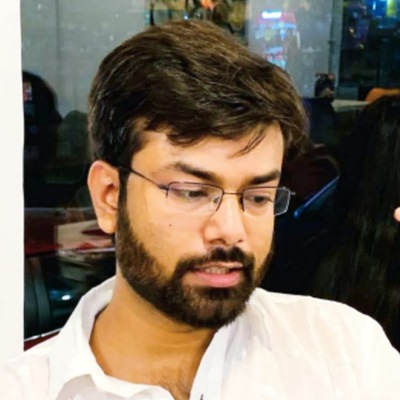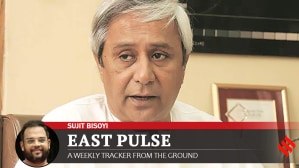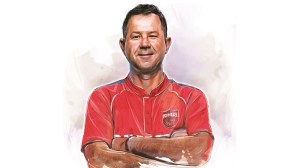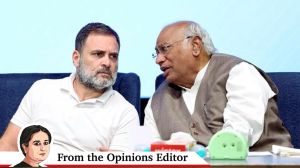UPSC Weekly Current Affairs Quiz | March 30 to April 05, 2025
Brush up your current affairs knowledge with this week's top 15 questions and consolidate your UPSC-CSE preparation. Find answers along with explanations.
 Brush up your current affairs knowledge with this week's top 15 questions. Find a question on Manoj Kumar in today's quiz. (File Image)
Brush up your current affairs knowledge with this week's top 15 questions. Find a question on Manoj Kumar in today's quiz. (File Image)UPSC Weekly Quiz is a current affairs-based quiz on relevant topics from the past week, curated for the aspirants of competitive examinations. Attempt the weekly quiz every Saturday and find answers to the MCQs with explanations.
🚨 Click Here to read the UPSC Essentials magazine for March 2025. Share your views and suggestions in the comment box or at manas.srivastava@indianexpress.com🚨
QUESTION 1
With reference to the Hypersonic missiles, consider the following statements:
1. It travels at least five times the speed of sound in the upper atmosphere.
2. These missiles are faster than intercontinental ballistic missiles.
3. Ground-based radars or terrestrial radars can easily detect hypersonic missiles.
Which of the statements given above is/are correct?
(a) 1 and 2 only
(b) 2 only
(c) 1 only
(d) 2 and 3 only
Explanation
— Russian President Vladimir Putin launched Perm, a nuclear-powered submarine armed with hypersonic Zircon missiles. Perm is the first of its sort to come equipped with Zircon (sometimes spelt Tsirkon) missiles as standard.
— Hypersonic missiles fly at Mach 5, or at least five times the speed of sound in the upper atmosphere. However, the fundamental attribute of a hypersonic missile is its manoeuvrability, which means that its trajectory can be changed depending on the intended target. Hence, statement 1 is correct.
— They are typically slower than intercontinental ballistic missiles. Hence, statement 2 is not correct.
— Hypersonic weapons have the potential to bypass missile defences and early warning systems. According to a Congressional report from 2021, ground-based or terrestrial radars cannot detect hypersonic missiles until they are well into flight. This makes it difficult for responders to the missile strike to intercept the missile and evaluate their choices. Hence, statement 3 is not correct.
— Conventional hypersonic weapons destroy unhardened targets or even subsurface facilities solely with kinetic energy, which is obtained from velocity.
Therefore, option (c) is the correct answer.
QUESTION 2
With reference to the Pamban Bridge, consider the following statements:
1. The construction of the old Pamban Bridge started in 1911 and was opened to traffic in 1914.
2. It was India’s first sea bridge.
3. It connects Rameswaram with mainland India.
4. The new bridge replacing the century-old original Pamban Bridge will become India’s First Vertical Lift Railway Sea Bridge.
How many of the statements given above are correct?
(a) Only one
(b) Only two
(c) Only three
(d) All four
Explanation
— The new Pamban Bridge, which stretches across the blue ocean and connects Rameswaram to mainland India and provides spectacular views for both trains and ships, will be launched by Prime Minister Narendra Modi on Ram Navami. Hence, statement 3 is corrrect.
— The new bridge, which will replace the century-old ancient Pamban Bridge, is regarded as an engineering wonder and India’s first vertical lift railway sea bridge. Hence, statement 4 is corrrect.
— The original Pamban Bridge began construction in 1911 and was opened to traffic in 1914. It was India’s first sea bridge, designed to facilitate trade. Hence, statements 1 and 2 are correct.
— During British administration, ships would travel between two ports: Dhanushkodi, on the south-eastern tip of Pamban or Rameswaram Island, which is now abandoned, and Talaimannar in Sri Lanka. Dhanushkodi was completely destroyed by the 1964 Tsunami and remains uninhabited today.
— It was India’s longest maritime link until the Bandra-Worli Maritime Link was constructed in 2010.
Therefore, option (d) is the correct answer.
QUESTION 3
With reference to Mt. Kangchenjunga, consider the following statements:
1. It is revered as the guardian deity of Sikkim.
2. The sacred mountain has been protected under the Places of Worship (Special Provisions) Act, 1991.
3. It has spiritual significance for the indigenous Reang and Darlong communities.
Which of the statements given above is/are correct?
(a) 1 and 2 only
(b) 2 only
(c) 2 and 3 only
(d) 1, 2 and 3
Explanation
— The Sikkim Bhutia Lepcha Apex Committee (SIBLAC) wrote to Governor OP Mathur, requesting prompt action to halt an Army expedition to Mt. Kangchenjunga, citing its religious and cultural significance.
— SIBLAC said: Mt. Kangchenjunga, recognised as Sikkim’s “guardian deity,” holds great spiritual significance for the indigenous Bhutia and Lepcha populations. Hence, statement 1 is correct and statement 3 is not correct.
— The sacred mountain is protected under the Places of Worship (Special Provisions) Act of 1991, which prohibits expeditions to its summit. Furthermore, the Sikkim government confirmed the restriction in 2001 and has since barred any climbing activities. Hence, statement 2 is correct.
Therefore, option (a) is the correct answer.
QUESTION 4
With reference to the Mahabodhi Temple, consider the following statements:
1. The temple complex is related to the life of the Lord Buddha, and particularly to the attainment of Enlightenment.
2. It was built by Emperor Asoka in the 3rd century B.C.
3. It is built entirely with red sandstone.
4. The temple is currently governed by the Temple Act, 1949.
How many of the statements given above are correct?
(a) Only one
(b) Only two
(c) All three
(d) None
Explanation
— These rallies are the latest chapter in a decades-long debate over who oversees one of Buddhism’s holiest places. Buddhists want to remove the Bodh Gaya shrine Act of 1949 (BGTA), which now governs the shrine. Hence, statement 4 is correct.
— In 589 BCE, Prince Siddhartha obtained enlightenment while meditating under the Bo tree in Bodh Gaya, becoming the Buddha (meaning “the Enlightened One”). Hence, statement 1 is correct.
— A simple shrine was constructed to mark the site by Emperor Ashoka in the 3rd century BCE, of which only the Vajrasana (Diamond Throne), a stone slab under the Bodhi tree next to the temple, remains. Additional structures were built during the Shunga period (2nd to 1st century BCE). Hence, statement 2 is correct.
— It is one of the first Buddhist temples built completely of brick that is still surviving from the late Gupta period, and it is said to have had a significant influence on the evolution of brick building throughout the ages. Hence, statement 3 is not correct.
— The property has the most significant archaeological relics from the 5th-6th centuries A.D. in the Indian subcontinent.
Therefore, option (c) is the correct answer.
(Other Source: whc.unesco.org)
QUESTION 5
Consider the following statements about the Green Credit Programme:
1. It was rolled out by the Ministry of Environment, Forest and Climate Change in 2023.
2. It seeks to invite voluntary participation in sectors ranging from plantations to water conservation in exchange for tradable credits.
3. It aims to incentivise “pro-planet” actions in response to climate change, which would promote the Centre’s Mission LiFE (Lifestyle for Sustainable Environment).
Which of the statements given above is/are correct?
(a) 2 only
(b) 1 and 2 only
(c) 2 and 3 only
(d) 1, 2 and 3
Explanation
— The Ministry of Law and Justice raised concerns about the legality of the economic model integrated into the Green Credit Programme (GCP), which will be implemented by the Ministry of Environment, Forest, and Climate Change in 2023. Hence, statement 1 is correct.
— The ambitious government initiative aims to encourage voluntary participation in industries ranging from agriculture to water conservation in exchange for transferable credits. Hence, statement 2 is correct.
— Prime Minister Narendra Modi and UAE President Sheikh Mohammed bin Zayed Al Nahyan officially unveiled the GCP on December 1, 2023, at the annual United Nations climate conference in Dubai.
— It was branded a method for incentivising “pro-planet” acts in reaction to climate change, as well as promoting the Centre’s Mission LiFE (Lifestyle for Sustainable Environment). Hence, statement 3 is correct.
— In October 2023, the Union Environment Ministry notified the Green Credit Rules, which outlined the program’s aims and implementation.
— At its core, the GCP seeks the voluntary engagement (read: investments) of individuals, businesses, industries, and other entities in seven various activities that would result in environmental improvements, such as tree planting, waste management, and water conservation.
Therefore, option (d) is the correct answer.
QUESTION 6
The Heard and McDonald Islands was recently in the news. It is part of:
(a) United States
(b) Canada
(c) Australia
(d) New Zealand
Explanation
— No one is believed to have visited the Heard and McDonald Islands in nearly a decade.
— The volcanic islands are one of Australia’s seven external territories, located around 4,100 kilometres south-west of Perth and 1,600 kilometres north of the Antarctic coastline.
— The archipelago, covered in glaciers and mostly barren, is one of the most remote regions on the globe, home only to penguins, seals, and seabirds.
— Donald Trump levied a 10% duty on goods from the Heard and McDonald Islands.
— The Heard and McDonald Islands aren’t the only perplexing additions to Trump’s list of “countries” on which the US has slapped reciprocal tariffs. The list includes three further Australian foreign territories: the Cocos (Keeling) Islands, Christmas Island, and Norfolk Island.
Therefore, option (c) is the correct answer.
QUESTION 7
Consider the following statements:
Statement 1: Persons of Indian Origin (PIO) can play for the Indian football team.
Statement 2: FIFA rules state that players who want to represent a country must bear its passport.
Which one of the following is correct in respect of the above statements?
(a) Both Statement 1 and Statement 2 are correct and Statement 2 is the correct explanation for Statement 1.
(b) Both Statement 1 and Statement 2 are correct and Statement 2 is not the correct explanation for Statement 1.
(c) Statement 1 is correct but Statement 2 is incorrect.
(d) Statement 1 is incorrect but Statement 2 is correct.
Explanation
— Hamza Choudhury, an English-born defensive midfielder, featured in Bangladesh’s 0-0 tie against India in a 2027 AFC Asian Cup qualifier.
— Choudhury, a 27-year-old Leicester City academy graduate, played seven games for England’s U21 side in 2018-19. But, being born to a Bangladeshi mother and with little chance of making it into a stacked English squad, he transferred his international allegiance to Bangladesh last year, before finally making his full international debut.
— Persons of Indian Origin (PIO) cannot play for the Indian football team, even if they want to. Hence, statement 1 is not correct.
— PIOs are those who have held Indian passports in the past, whose parents, grandparents, or great-grandparents were born and raised in India, or who are married to an Indian citizen or another PIO. Overseas Citizens of India (OCI) is a scheme that provides PIOs with visas and other advantages.
— PIO or OCI players who want to represent India must first exchange their foreign passports for Indian ones.
— This is because FIFA rules require players to have a passport from the country they desire to represent. Hence, statement 2 is correct.
Statement 1 is incorrect but Statement 2 is correct.
Therefore, option (d) is the correct answer.
QUESTION 8
North Sentinel Island was recently in the news. It is located in:
(a) Lakshadweep
(b) Andaman and Nicobar Islands
(c) Andhra Pradesh
(d) Tamil Nadu
Explanation
— It was discovered that he had entered the forbidden tribal reserve area. He was arrested, and a FIR was filed against him under Sections 14/14(A) of the Foreigners Act of 1946, as well as Sections 7/8(4) of the Andaman and Nicobar Islands (Protection of Aboriginal Tribes) Amendment Regulation of 2012.
Therefore, option (b) is the correct answer.
QUESTION 9
With reference to the Forest Rights Act (FRA), 2006, consider the following statements:
1. It recognizes the rights of the forest dwelling tribal communities and other traditional forest dwellers to forest resources.
2. It does not encompass Rights of Self-cultivation.
3. It provides community rights as Grazing, Fishing and access to Water bodies in forests.
Which of the statements given above is/are correct?
(a) 1 only
(b) 2 and 3 only
(c) 1 and 3 only
(d) 1, 2 and 3
Explanation
— Congress leader Rahul Gandhi said the Narendra Modi government had failed to protect the rights of tribals and urged it to act swiftly to defend the Forest Rights Act in the Supreme Court.
— The Forest Rights Act (FRA) of 2006 recognises the rights of forest-dwelling tribal people and other traditional forest dwellers to forest resources on which they rely for a range of needs, including subsistence, housing, and other socio-cultural requirements. Hence, statement 1 is correct.
— Until the enactment of this Act, forest management policies in both colonial and post-colonial India, including the Acts, Rules, and Forest Policies of Participatory Forest Management policies, did not recognise the STs’ symbiotic relationship with the forests, as evidenced by their reliance on the forest and their traditional wisdom regarding forest conservation.
— The Act encompasses Rights of Self-cultivation and Habitation, which are usually regarded as Individual Rights; and Community Rights such as Grazing, Fishing, and access to Water bodies in forests, Habitat Rights for PVTGs, Traditional Seasonal Resource access of Nomadic and Pastoral communities, access to biodiversity, community right to intellectual property and traditional knowledge, recognition of traditional customary rights, and right to protect, regenerate, conserve, or or manage any community forest resource for sustainable use. Hence, statement 2 is not correct and statement 3 is correct.
— It also grants the rights to allocate forest property for development activities in order to meet the community’s basic infrastructure needs.
Therefore, option (c) is the correct answer.
(Other Source: tribal.nic.in)
QUESTION 10
With reference to the Vibrant Villages Programme, consider the following statements:
1. It is a Central Sector Scheme.
2. The Programme would help in the comprehensive development of the villages located in the blocks abutting international land borders (ILBs).
Which of the statements given above is/are correct?
(a) 1 only
(b) 2 only
(c) Both 1 and 2
(d) Neither 1 nor 2
Explanation
— The Union Cabinet has authorised the second phase of the Vibrant Villages Programme (VVP), which aims to comprehensively develop select villages along international borders.
— The Cabinet approved the Vibrant Villages Programme-II (VVP-II) as a central sector scheme with the Centre providing 100% finance, demonstrating its commitment to the vision of Viksit Bharat@2047 for ‘Safe, Secured, and Vibrant land boundaries’. Hence, statement 1 is correct.
— The initiative would aid in the overall development of villages located in blocks abutting international land borders (ILBs), save for the northern border, other than the northern border already covered under VVP-I. Hence, statement 2 is correct.
— The Vibrant Villages Programme has been a game changer in transforming our border settlements into thriving hubs of growth and development.
— The program’s goal is to improve living conditions and provide adequate livelihood opportunities in order to ensure prosperous and safe borders, control trans-border crime, and assimilate the border population with the nation while instilling them as “eyes and ears of the border guarding forces,” which is critical for internal security.
Therefore, option (c) is the correct answer.
QUESTION 11
B-2 Spirit stealth bomber was recently seen in news with reference to:
(a) deployed by the United States in the Indian Ocean
(b) deployed by North Korea after the annual joint exercises by the South Korean and U.S. militaries
(c) developed by Russia in its secret nuclear lab
(d) None of the above
Explanation
— The United States has deployed six B-2 Spirit stealth bombers to the island of Diego Garcia in the Indian Ocean. According to satellite images reviewed by CNN, this marks the largest-ever deployment of these aircraft to the region. The move is seen as a strong message to Iran and its allies amid rising tensions in the Middle East.
— CNN reported that the six bombers make up nearly a third of America’s total B-2 fleet, which consists of just 20 aircraft.
Therefore, option (a) is the correct answer.
QUESTION 12
Bangkok Vision 2030, recently seen in news is related to:
(a) East Asia Summit
(b) BIMSTEC
(c) Mekong-Ganga Cooperation
(d) Asia Cooperation Dialogue
Explanation
— Underlining that BIMSTEC is a model for inclusive development and collective security and not merely a regional organisation, Prime Minister Narendra Modi Friday announced more than 20 initiatives — from the mechanism of Home Ministers on security to UPI connecting payment mechanisms, an energy centre to a chamber of commerce.
— Speaking at the 6th BIMSTEC Summit in Bangkok, Modi said, “BIMSTEC serves as a vital bridge between South and Southeast Asia, and is emerging as a powerful platform for advancing regional connectivity, cooperation and shared prosperity.”
— “It is a matter of great satisfaction that the BIMSTEC Charter came into force last year. I am confident that the Bangkok Vision 2030, which we are adopting today, will further our collective commitment to building a prosperous, secure and inclusive Bay of Bengal region,” he said.
Therefore, option (b) is the correct answer.
QUESTION 13
Back in 1932, the Nizam of Hyderabad, in coordination with the British, established what was then one of India’s largest airfields. This airfield was used by the British in World War II, bombed by the Indian Air Force during Operation Polo, and played a strategically important role during the 1962 Indo-China War.
The above lines refer to:
(a) Mamnoor airstrip
(b) Donakonda Airstrip
(c) Westland Wapiti
(d) Juhu aerodrome
Explanation
— Once India’s largest airfield, the Mamnoor airstrip in Telangana now lies forgotten. As Centre gives nods for its revival, locals recall the era when the skies above their village were a part of India’s aviation map.
— Sitting on a concrete bench in Mamnoor village in Telangana’s Warangal district, 88-year-old Patwari Janardhan Reddy reminisces about the days when planes soaring through the sky were a common sight and their village was a part of India’s aviation map.
— Back in 1932, the Nizam of Hyderabad, in coordination with the British, established what was then one of India’s largest airfields — the Mamnoor airport. The airfield was used by the British in World War II, bombed by the Indian Air Force during Operation Polo, and played a strategically important role during the 1962 Indo-China War.
Therefore, option (a) is the correct answer.
QUESTION 14
Read the given statements carefully and choose the correct answer:
Statement 1: Remittances from advanced economies have risen steadily in recent years, overtaking the Gulf Cooperation Council (GCC) countries, which have traditionally contributed the largest share of remittances to India.
Statement 2: The economic downturn caused by the COVID-19 pandemic and the “nationalization” policies in the Gulf are some of the factors that have led to a decline in remittances from the Gulf. In contrast, remittances from advanced economies have increased as Indian professionals earn significantly more in these countries compared to their counterparts in the Gulf.
Select the correct answer using the codes given below:
(a) Both Statement 1 and Statement 2 are true, and Statement 2 is the correct explanation of Statement 1.
(b) Both Statement 1 and Statement 2 are true, but Statement 2 is not the correct explanation of Statement 1.
(c) Statement 1 is true, but Statement 2 is false.
(d) Statement 1 is false, but Statement 2 is true.
Explanation
— Findings of the Reserve Bank of India’s (RBI’s) latest Remittances Survey released last month show a significant shift in India’s remittance sources.
— The Advanced Economies (AEs) — particularly the United States, the United Kingdom, Singapore, Canada, and Australia — together accounted for more than half the total remittances in 2023-24, overtaking the Gulf Cooperation Council (GCC) countries, which have traditionally contributed the largest share of remittances to India. Hence, statement 1 is true.
— Historically, the six GCC nations — Saudi Arabia, the United Arab Emirates (UAE), Qatar, Oman, Bahrain, and Kuwait — have been the biggest contributors of remittances to India because of the large numbers of Indian workers employed in those countries.
— However, multiple factors have led to a decline in remittances from the Gulf.
— The economic downturn caused by the Covid-19 pandemic resulted in widespread job losses and salary cuts, reducing the disposable income available for remittances. Hence, statement 2 is true.
— Additionally, “nationalisation” policies — such as the Saudi Nationalisation Scheme or Nitaqat, also known as “Saudisation” — which prioritise local employment over foreign workers, have significantly decreased opportunities for Indian migrants.
— Remittances from the AEs have risen steadily in recent years. Although the number of Indian migrants in the US is smaller than in the GCC, they send higher per capita remittances due to higher wages (including a higher minimum wage) and the greater purchasing power of the US dollar.
— This pattern is also seen in other advanced economies such as Canada, the UK, Germany, and Australia, where Indian professionals earn significantly more than their counterparts in the Gulf.
— The increasing number of highly skilled Indian professionals in advanced economies, particularly in the STEM fields, finance, and healthcare, has contributed to higher remittance inflows. Our recent research on the India-Germany, India-Austria, and the India-Netherlands corridors supports this trend. We need more research on this.
Both Statement 1 and Statement 2 are true, and Statement 2 is the correct explanation of Statement 1.
Therefore, option (a) is the correct answer.
QUESTION 15
Set in the backdrop of the Indo-Pakistani War of 1965 and inspired by former Prime Minister Lal Bahadur Shastri’s vision for India — “Jai Jawan Jai Kisan” — Manoj Kumar as this film’s protagonist is seen in the first half as a farmer and later as an armyman.
Which is the iconic film referred to in the above lines?
(a) Kranti
(b) Upkar
(c) Roti Kapada Aur Makaan
(d) Purab Aur Paschim
Explanation
— Manoj Kumar passed away at 87 in Mumbai in the early hours of Friday due to heart-related complications.
— In Shaheed (1965), his first major ‘patriotic’ film based on the life of Bhagat Singh, Manoj Kumar (born Harikrishna Giri Goswami) essayed the central role of the young revolutionary.
— Later on, the actor-turned-director was rechristened ‘Bharat Kumar’, thanks to the popularity of his on-screen persona in Upkar (1967). Set in the backdrop of the Indo-Pakistani War of 1965 and inspired by former Prime Minister Lal Bahadur Shastri’s vision for India — “Jai Jawan Jai Kisan” — Manoj Kumar as Upkar’s protagonist is seen in the first half as a farmer and later as an armyman.
Therefore, option (b) is the correct answer.
Previous Weekly Quiz
UPSC Weekly Current Affairs Quiz | March 23 to March 29, 2025
UPSC Weekly Current Affairs Quiz | March 16 to March 22, 2025
UPSC Weekly Current Affairs Quiz | March 09 to March 15, 2025
UPSC Weekly Current Affairs Quiz | March 02 to March 08, 2025
UPSC Weekly Current Affairs Quiz | February 23 to March 01, 2025
Subscribe to our UPSC newsletter and stay updated with the news cues from the past week.
Stay updated with the latest UPSC articles by joining our Telegram channel – IndianExpress UPSC Hub, and follow us on Instagram and X.
Must Read
Buzzing Now



Apr 08: Latest News
- 01
- 02
- 03
- 04
- 05
























